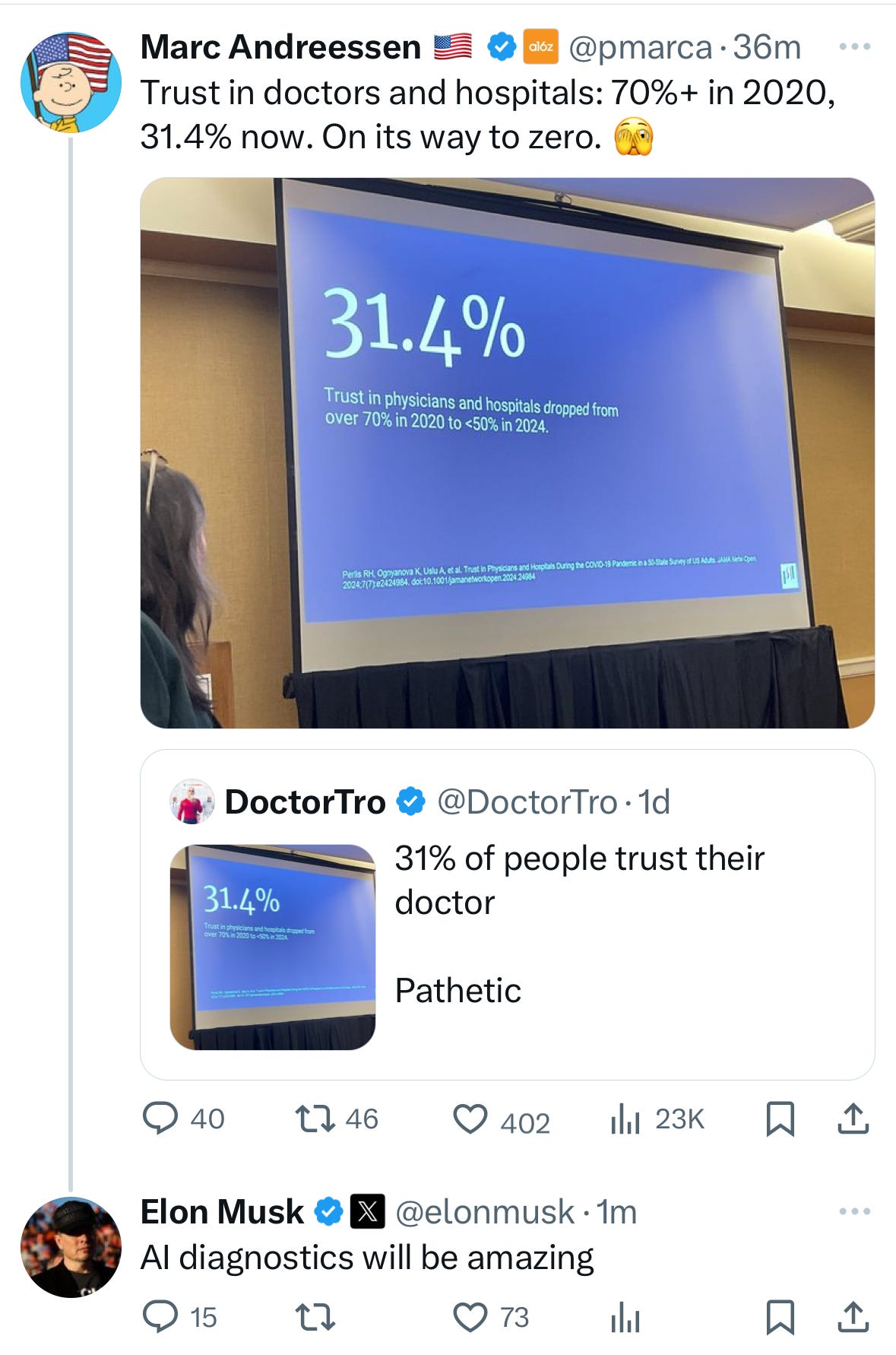Media Networks and Pharma Retail
Role for RMNs in the pharma retail sector is gaining traction, especially with the rise of e-pharmacies, e-com platforms, and q-com sites. RMNs are becoming increasingly applicable to pharma retailers
I have been exploring several things that other industries do at their POS (points of sale). This is where people turn into customers and buy instead of just stand and stare at your product or compare it with others like they do with medicines. If they have no points of comparison, or no clear understanding of what your brand stand for (value prop), guess what they do? Compare prices. And that is a massive fail.
Points of sales are a huge untapped opportunity for Rx brands. It is misunderstood to be one for OTC, but no, that is a lack of imagination on the part of Rx brand marketers who continue to venerate doctors despite data like this...
So what can Rx marketers do at retail pharmacies or at e-pharmacies now? How can value be created and delivered at the points of sale? Enter RMNs.
Retail Media Networks (RMNs) are emerging as a powerful tool in the world of retail, offering brands new ways to connect with consumers. RMNs allow retailers to monetize their digital platforms (think e-pharmacies) by enabling advertising directly within their ecosystems.
While traditionally associated with consumer goods, the application of RMNs in the pharmaceutical retail sector is gaining traction, especially with the rise of e-pharmacies, e-commerce platforms, and quick commerce (q-com) sites. RMNs are becoming increasingly applicable to pharma retailers and their implications for medicine distribution.
How does it work?
Retail Media Networks operate as advertising platforms hosted by retailers, allowing brands to display targeted advertisements (before you go for my throat, understand that there is lot we can advertise other than the brand name) on websites, apps, and other digital channels. These networks rely on first-party data collected from customers’ purchase behaviors, preferences, and browsing history to deliver highly personalized advertisements. This precision in targeting provides brands with a significant advantage in creating impactful campaigns.
The pharmaceutical retail landscape is undergoing a significant transformation:
Rise of E-Pharmacies: Online pharmacies like PharmEasy, Netmeds, and 1mg are capturing a growing share of medicine distribution, offering convenience and competitive pricing.
E-Commerce Integration: Platforms like Amazon and Flipkart are diversifying into pharmaceutical retail, providing a broad marketplace for over-the-counter (OTC) drugs, supplements, and wellness products.
Q-Commerce Platforms: Quick commerce providers such as Blinkit, Dunzo, and Zepto are catering to urban consumers with instant delivery of essential medicines and wellness products.
This shift to digital channels has paved the way for RMNs to be integrated into pharma retail ecosystems.
I see this as a great opportunity to work with mom and pop stores as well as chain pharmacies too. In the physical world, brands created a presence by making signboards for these shops. In the digital world, pharma can help these stores create/use apps to build a community of their customers. This is where content is pushed to those customers and the role of RMNs come in.
Enhanced Brand Visibility:
RMNs provide pharmaceutical companies with an avenue to showcase their products—both prescription and OTC medicines—to consumers. With precise targeting, they can promote brands to specific demographics, such as senior citizens, young families, or fitness enthusiasts. Since these are folks with Rx and buy medicines at the pharmacist, targeting such content shouldn't be a problem.Educational Campaigns:
Pharma companies often focus on consumer education about the benefits, usage, or precautions of their medicines. RMNs enable companies to run ads with educational content directly on e-pharmacy platforms, helping customers make informed decisions.Boosting OTC Sales:
Over-the-counter drugs and supplements thrive on impulse purchases. RMNs on e-pharmacy and q-com platforms can promote these products during key moments, such as when a user searches for related items or views their shopping cart.Data-Driven Insights:
By leveraging first-party data from RMNs, pharma brands can gain valuable insights into consumer behavior, including which products are most searched, purchased, or browsed. This data can help inform marketing strategies and product development. This is one way to break out of the cookieless worldLocalized Marketing Campaigns:
RMNs allow pharma brands to tailor campaigns for specific regions, targeting areas where certain health issues are prevalent. For example, promoting anti-pollution masks or respiratory medicines in cities with high pollution levels.Cross-Selling Opportunities:
Platforms using RMNs can suggest complementary products. For instance, if a customer is purchasing fever medication, the system can recommend vitamins or hydration solutions.
The rise of RMNs in pharma retail represents a shift toward a more consumer-centric, digitally integrated healthcare ecosystem. By leveraging RMNs, pharmaceutical companies can:
Strengthen their connection with consumers through personalized advertising.
Bridge the gap between healthcare providers and end-users by offering timely product recommendations.
Enhance medication adherence by promoting reminders or subscription-based delivery services.
In addition, the integration of RMNs with advanced technologies such as artificial intelligence (AI) and machine learning (ML) can further refine targeting strategies, improving both efficacy and return on investment for pharma brands.



